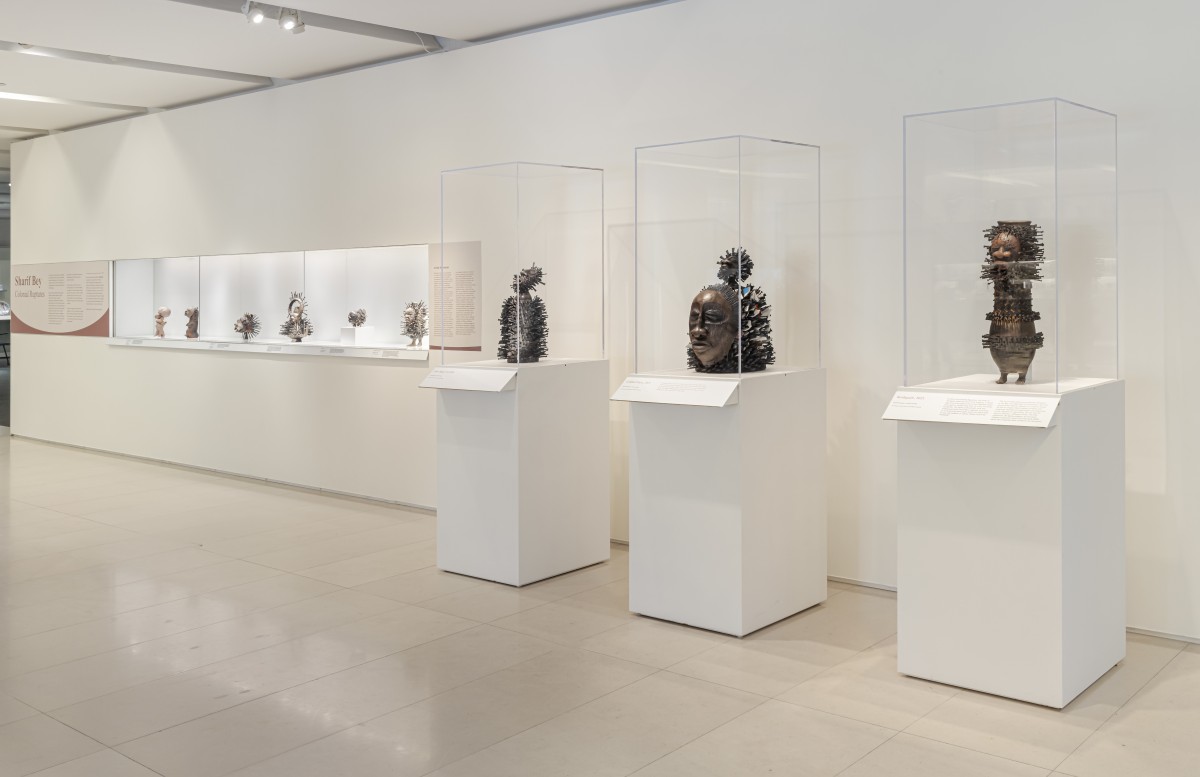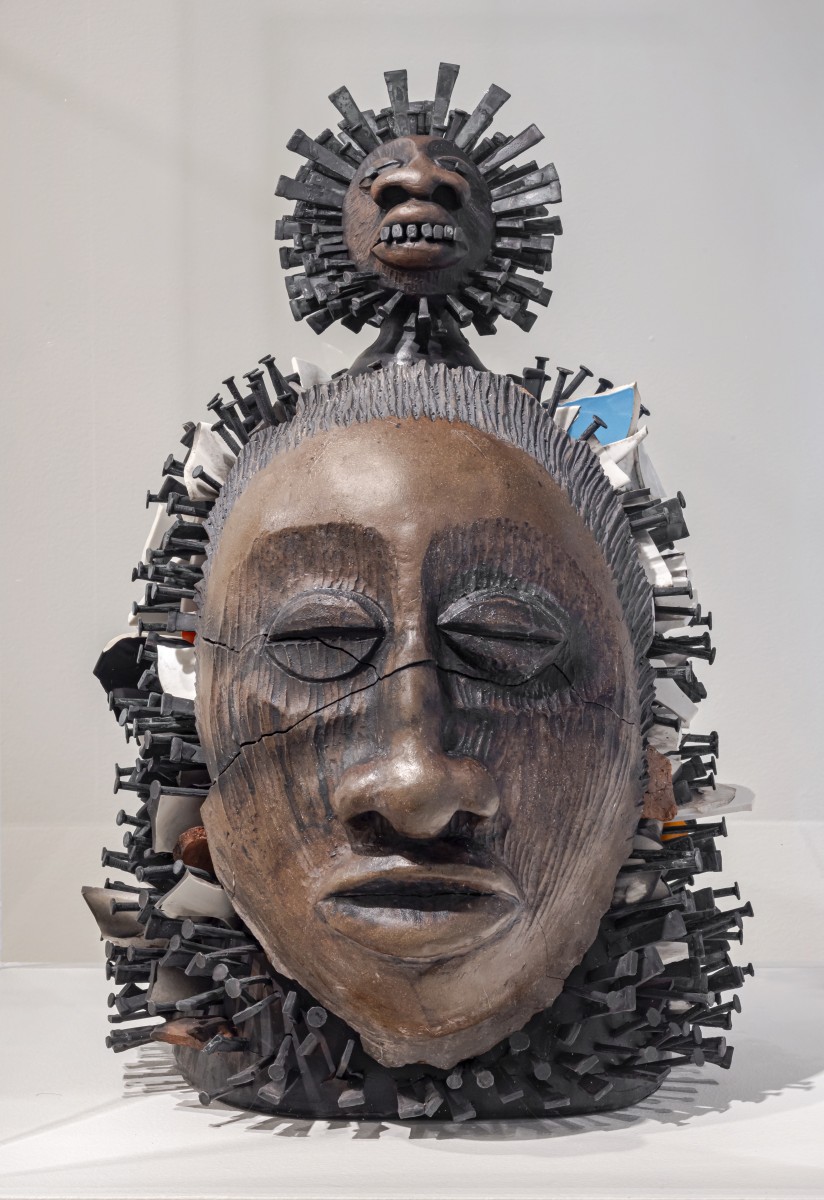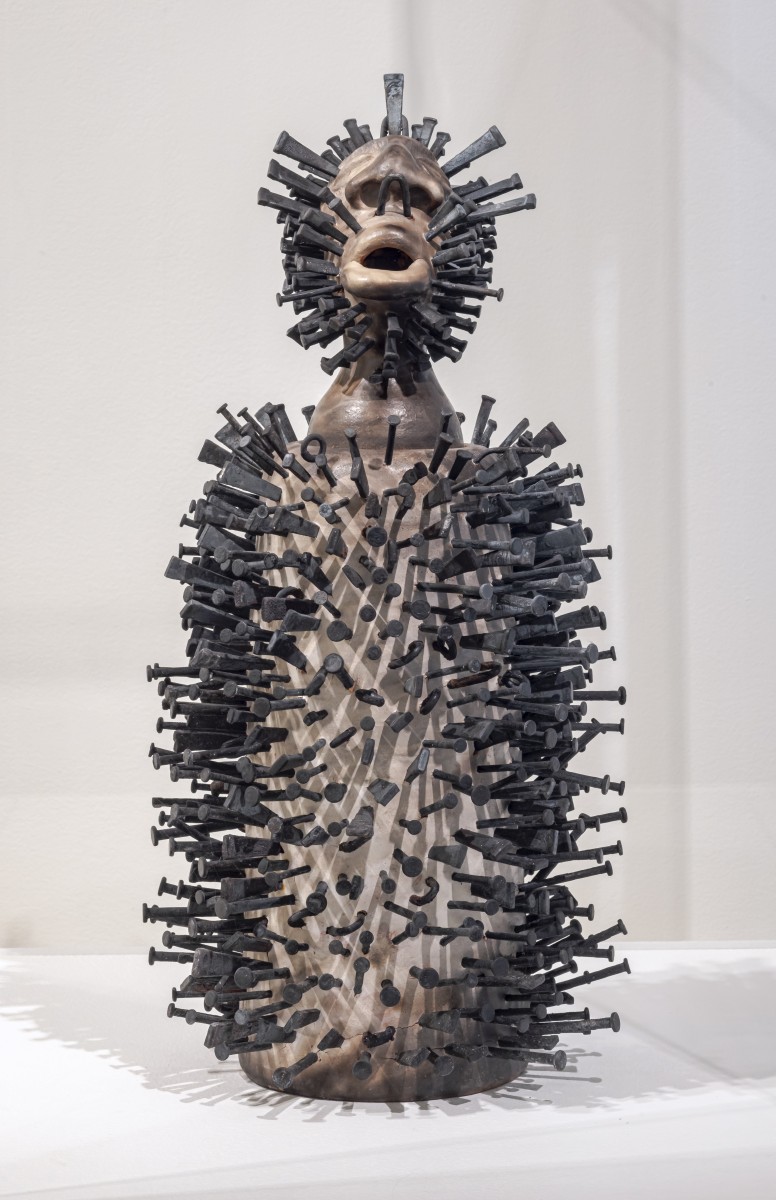Colonial Ruptures
What can it mean when historical artifacts are removed from their original context? Visual artist, ceramist and educator Sharif Bey explores this through his sculptures, on view until Sunday at the Gardiner Museum.

Sharif Bey, The Oviary, 2016. Earthenware, mixed media. Collection Mill Iron. Photo: Toni Hafkenscheid.
When historical artifacts are removed from their place and period of origin in an act of colonial violence, is there still room for speculation and wonder? What worlds, rituals and powers can these objects embody and signify? A selection of evocative sculptural works by African-American artist and educator Sharif Bey, on display at the Gardiner Museum until Sunday, August 28, invites viewers to deeply consider these questions and more. “My works investigate the symbolic and formal properties of archetypal motifs,” explains Bey in his artist statement, “questioning how the meanings of icons, objects, and functions transform across cultures and over time.” Sharif Bey: Colonial Ruptures is curated by Sequoia Miller, Chief Curator and Deputy Director at the Gardiner Museum
Working figuratively, Bey’s sculptures are often comprised of repurposed fragments of the artist’s previous works, sometimes made decades ago, quite literally combining and connecting the past to the present. African and Afro-diasporic aesthetic traditions centre Bey’s practice. He draws particular influence from Central African power figures (nkisi), along with “Andean ceramics and contemporary popular culture”. Like the nkisi, where the surfaces of sculptural figures are embedded with metal and other materials to represent sacred power and spirituality, Bey pierces his sculptures with nails and porcelain shards – not only forming a connection between past and present but also acknowledging the intersections between Africa and its diaspora. Bey begins each work with a central pottery form, usually a hollow ceramic vessel, eventually adding different elements like a mask, legs, or a lid. Some of the porcelain is sourced from Syracuse China, a former ceramics manufacturer located near Bey’s home that closed in 2009. Bey’s inclusion of these porcelain shards highlights the transition away from U.S. manufacturing “while acknowledging the longevity and domesticity of ceramics”.
Bey is a teaching artist with extensive experience in ceramics and sculpture. Born as one of twelve children and a descendant of four generations of boilermakers, he was raised in a large African-American family in Pittsburgh. He went on to earn BFA from Slippery Rock University, an MFA from the University of North Carolina in Greensboro, and a PhD in art education at Penn State University. His work is featured in numerous public collections, including The Smithsonian American Art Museum, The Museum of Fine Arts in Houston, The Carnegie Museum, The Columbus Museum, The Everson Museum, and The Westmoreland American Art Museum. He is currently an Associate Professor of Studio Art at Syracuse University.
Don’t pass up the chance to check out Sharif Bey: Colonial Ruptures, on view at the Gardiner Museum before it closes this Sunday, August 28.



